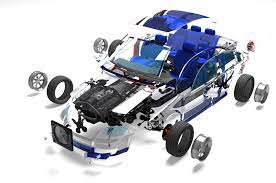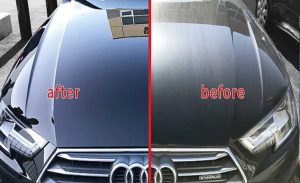
Emerging Technologies in Aftermarket Auto Parts: What’s Shaking Up the Industry?
Let’s be honest—cars aren’t just machines anymore. They’re rolling tech hubs. And the aftermarket auto parts industry? Well, it’s racing to keep up. From 3D-printed components to AI-driven diagnostics, innovation is rewriting the rules. Here’s the deal: if you’re into cars (or just curious), these emerging technologies are worth a look.
1. 3D Printing: Custom Parts On-Demand
Imagine needing a rare trim piece for a vintage Mustang. Instead of scouring junkyards, you print it. That’s the promise of 3D printing in aftermarket parts. Companies are already using it for:
- Prototyping – Testing designs before mass production.
- Low-volume production – Perfect for niche or discontinued parts.
- Customization – Tailored solutions for performance or aesthetics.
The catch? Material durability still lags behind traditional manufacturing for high-stress components. But for trim, brackets, or even intricate grilles? Game-changer.
2. AI and Machine Learning: Smarter Diagnostics
You know that annoying “check engine” light? AI’s making it less cryptic. Aftermarket scan tools now use machine learning to:
- Predict failures before they happen.
- Suggest compatible aftermarket parts based on your car’s history.
- Even optimize performance tweaks for modified engines.
Some systems cross-reference real-time data from thousands of similar vehicles. It’s like having a mechanic’s intuition—without the hourly rate.
3. Augmented Reality (AR) for Installation
Ever tried installing a part with just a YouTube tutorial? AR takes it further. Point your phone at your engine bay, and step-by-step holographic guides overlay the real world. Brands like BMW and Audi are experimenting, but aftermarket companies are catching up. Potential uses:
- Visualizing how a new exhaust system fits before purchase.
- Guiding DIYers through complex wiring setups.
- Highlighting torque specs or alignment points in real-time.
Still niche, but the tech’s evolving fast. Imagine never misaligning a turbocharger again.
4. Blockchain for Authenticity
Counterfeit parts cost the industry billions yearly. Blockchain’s tamper-proof ledgers let buyers verify a part’s origin, material specs, and even installation history. For high-end performance parts or safety-critical components? Huge.
How It Works:
| Step | Process |
| 1 | Manufacturer logs part details on blockchain at production. |
| 2 | Each resale or transfer updates the chain. |
| 3 | End user scans a QR code to confirm authenticity. |
Early days, sure—but imagine buying a “genuine” catalytic converter and knowing it’s legit.
5. IoT-Enabled “Smart” Parts
Your brake pads could text you when they’re worn. Seriously. IoT (Internet of Things) sensors embedded in aftermarket parts enable:
- Real-time wear monitoring.
- Automated reordering when parts near end-of-life.
- Integration with apps for performance tracking.
Downside? Cost and compatibility hurdles. But for fleet managers or hardcore enthusiasts, the data’s gold.
Wrapping Up: The Road Ahead
The aftermarket industry’s always been about ingenuity—hot-rodders welding scraps into masterpieces, tuners squeezing extra horsepower from stock engines. These technologies? They’re just new tools in the same garage. The real question isn’t “if” they’ll become mainstream, but how they’ll reshape what we even consider a “car part.”



